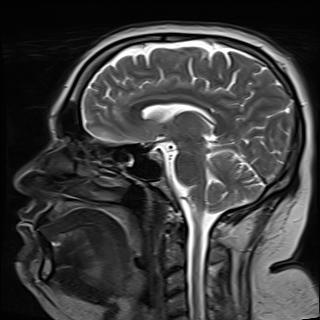I got the T460 refurbished and I really didn’t want to run Windows 10 on it. I last used Linux for any real length of time a good 20 years ago, so I’m pretty inexperienced with it at this point and I had to figure out how to install it myself.
They made it unreasonably difficult to first install an OS from a USB stick. I had to go into the BIOS, turn UEFI to legacy, turn off secure boot, reboot to boot from the USB stick, install Mint, then turn legacy back to UEFI to get it to boot from the hard drive. This took about 2 hours of trying to figure it out by doing a lot of forums reading.
I do not blame the Mint community or the Linux community as a whole. There is absolutely no reason that it should have been that hard to install Mint on that notebook.
I don’t even think getting into the BIOS once time should be necessary, but changing a BIOS setting so you can install the OS and changing it back so you can run the OS off the internal drive is just ridiculous and I find it hard to believe Lenovo couldn’t have just made it easier. I’m fairly convinced this was intentional on their part.
I’m not an IT professional or anything, but I know enough to figure this stuff out with effort, but it shouldn’t have taken that effort. It should have been almost plug-and-play. This is 2024. The notebook isn’t even 10 years old.
Is there actually a good reason for this or are they just kissing Microsoft’s ass?
This has nothing to do with Lenovo perse, this is the average experience for every laptop I’ve owned which had Secure Boot turned on.
You know what is fun? Having your Dell basically bricking because Fedora starts shipping a new version of shim-x64 which completely fails the UEFI handover to bootloader. Leaving you unable to boot at all, so no chance of reaching rescue mode. Then more fun times of booting a live environment from a usb stick after going through the same hoops you went through, finding out how to decrypt your BTRFS partitions, manually mounting and chrooting them so you can finally downgrade the offending package.
Linux and Secure Boot just isn’t a great combination if you ask me.
That sounds pretty awful, sorry that you went through that.
And that’s just the quick summary, first time I just restored a backup. But as my system immediately failed again after updating I started digging and came across some obscure posts of Lenovo users (ok, maybe Lenovo isn’t that great with implementing Secure Boot after all 😋) having the same issue and devised that rescue plan. Quite the nightmare indeed, but at the other hand it also taught me some new skills. After going through the same routine on each update of that package I ended up excluding it from updates in DNF.
Don’t now if the issue was ever resolved, I’ve since stepped away from Fedora as I’ve just had too many of these weird issues with it on each new release. Creating bug reports and the accompanying warm feeling of helping to improve the Linux ecosystem is nice, but in the end I just need to get work done.
deleted by creator
It’s impossible to make the situation with BIOS easier. Incorrect boot order and secure boot are enabled by default for security and Windows compatibility reasons. Though I never heard that it’s required to turn on legacy mode and change it back. Probably it’s a highly model-specific thing. And btw secure boot is Mint’s fault. It just doesn’t support it yet
It’s not even machine specific. UEFI vs legacy bios boot mode is universally supported in all but the latest systems. If OP had to switch to legacy boot mode then they probably made the USB “incorrectly”. You’d run into the same issue on windows if you made the USB boot drive for legacy bios mode.
I’d love to know what I did wrong if you can tell me. I used Etcher like the instructions on Mint’s website told me to.
Idk. I use Etcher and it never asks for any modes. Rufus is different though
secure boot is Mint’s fault.
Well now I’m just surprised considering this is a 2016 notebook. They should be supporting a feature that old, shouldn’t they?
Some distros support it but it’s only like 4 or 6 of them. I guess it’s really hard to support and maintain such feature
And btw secure boot is Mint’s fault. It just doesn’t support it yet
Not the case. I’m typing this on a Surface laptop running Mint with Secure Boot enabled. Even the bootable Mint USB can be run with Secure Boot turned on.
Hmm then I guess I made a mistake
This sounds like it was strictly the fault of the USB load. If you make a UEFI USB (you should use Ventoy, it’s great btw) all you would need to do is shut off Secure Boot and install.
Most bootable drives don’t support Secure Boot. You turn it off, do the install, and turn it back on if you want it. I personally just leave it off.
Outside of those caveats everything you described is industry-standard stuff. Nothing to do with Lenovo.
Being unable to boot from a USB drive in UEFI mode sounds like a Mint problem. I just booted from an Ubuntu LTS USB on a similar machine, installed with all default BIOS. Haven’t touched Secure Boot either. No trouble.
Hm. Maybe I should have tried a different flavor of Linux in terms of ease of install. But Mint seemed like the best choice for me and now that it’s actually up and running, it’s fine.
By all means, if it works already, don’t fuck with it.
This community hates on Ubuntu but these are the kinds of corner cases that can make or break a new user’s journey. Experienced users can resolve those with no emotion and we often discount the difficulty and importance of such issues to less experienced users. There’s been a lot of work put in Ubuntu to tackle these kinds of issues - paper cuts. Recall the One Hundred Paper Cuts project. This is why I won’t stop recommending Ubuntu LTS for new users.
It’s good to know for the future if nothing else, so I appreciate it.
Wow what a ride. Congrats on making it work, I’m not sure if I wouldn’t have given up at some point. Great job!
About kissing M$'s ass, don’t get me started on updating the BIOS on a HP Laptop, they require you to do that in Windows cause it’s the only way to get their downloader to run. So it’s not only Lenovo’s Laptops that don’t play nice with Linux.
I didn’t even want to take a chance with an HP considering how fucked up their printers are.
I have HP Zbook, Linux works fine. There is a BIOS bug that linux boot acknowledges and moves forward with…just an annoying few intial mesaages during bootup
Well, you shouldn’t have to turn UEFI off to boot from the USB stick. That one could actually be on Mint. Or on the way the stick was created. It’s been a while since I messed with this stuff but by now a typical Linux installation medium should be able to boot with UEFI.
The secure boot is enabled by default so that only signed operating systems and not some malware can boot the computer. And I guess it’s legitimate to not have the keys of all the Linux distributions under the sun in there.
I’m not a secure boot expert, but it sounds like Mint should be supported anyway, according to Wikipedia:
Secure Boot is supported by Windows 8 and 8.1, Windows Server 2012 and 2012 R2, Windows 10, Windows Server 2016, 2019, and 2022, and Windows 11, VMware vSphere 6.5 and a number of Linux distributions including Fedora (since version 18), openSUSE (since version 12.3), RHEL (since version 7), CentOS (since version 7), Debian (since version 10), Ubuntu (since version 12.04.2) and Linux Mint (since version 21.3). As of January 2024, FreeBSD support is in a planning stage.
Support doesn’t mean that their key is in there, though. It could also just mean that it has the ability to store its own key.
Thanks for the update <thumbs_up>
You should have been able to boot from USB and install fully in UEFI mode with Secure Boot enabled, but sometimes the method you use to make the bootable USB can screw that up. I’ve always had good luck with Ventoy.
That sounds extremely infuriating! Regarding Lenovo and Linux Mint, I actually had a very good experience with them a little over a year ago. I bought a new IdeaCentre 5i pre-built desktop tower and had zero issues installing Mint on it. All I had to do was press F12 and select to boot from the bootable USB to install, no screwing with the BIOS or anything. But I’ve never tried installing Linux on a laptop. I only use desktops.
It was so stupid. F12 should have been all it took, but it didn’t even recognize the USB drive existed.
That’s surprising, Thinkpad x240 owner here. With all the os i installed on it i never had to do such overcomplicated manipulation, just bios entering + boot on usb.
Maybe it’s just a 460 thing?
I recently installed it on a t480 while distrohopping. I didn’t need to turn off uefi, secure boot has been off since i got this laptop and i never turned it back on. My best guess is that you either did something wrong when making the live media, or during the installation. Next time try using ventoy, it’s a really useful tool.
I’ll try Ventoy next time, thanks. I just followed the install instructions on Mint’s website which says to use Etcher. Maybe that’s the problem.
Also, did you manually edit your partitions? It might be related to your bootloader being in
/bootinstead of/boot/efi. The first one’s for legacy bios, and the second is for uefi.Nope, I didn’t do that either.
I don’t feel like that’s exclusive to Lenovo, fwiw. I have an Asus laptop, and it went like that for me installing Linux from a USB stick. It was a hassle and you’re right that it seems harder than it needs to be.
I don’t have any idea why it’s like that, but it feels like it’s a better option than someone being able to walk up to my PC/laptop/whatever and change my os just by using a thumb drive without any other hoops to go through. That’s just where I stand on the issue, but you’re right that it sucks for the owner/user.
If you walk up with a Windows usb, what would Happen? Would you just be able to reinstall windows and even have it activated by the key in the TPM? I think so.
I guess I don’t know - I think you’d still have to go into BIOS and switch it to boot from USB? I don’t know about the rest of it, but I’m pretty sure it wouldn’t just start installation. Unless it’s a thumb drive specifically tailored to take over someone’s system?
So yes, you could reinstall Windows, but it would still require a reboot to BIOS to allow for it. Am I missing something? What’s the big “gotcha” that I missed? I genuinely don’t know, and since I am not an expert on installation of OSes, if you could enlighten me, that could be useful for me.
I’m not very sure myself, thats why I phrased it that way ^^ wasn’t supposed to be a gotcha.
Didn’t try in a long time and maybe even tried without sacure boot, but all the times I put a windows USB in a windows machine and told it to boot from it (without entering bios, just a boot selection by hitting the right key) it just started so you could just reinstall windows, even with the old installation being moved to windows.old, so it could be searched.
Could be totally wrong here.
Hell, I could be wrong too :-P I’ve never gone in that direction - only adding a Linux dual boot from USB stick. That sounds kinda scary, and would definitely make it easy.
Well, damn. Thanks for warning me about that possibility - looked like more steps that included BIOS last I checked, but as I said, I’ve never needed the process.
¯\_(ツ)_/¯Edit: I should note that I have installed Windows from a USB stick recently, I’ve just never already had another OS installed and then going to Windows. Most of my experience is installing a Linux flavor for dual boot.
Yeah, I’m probably going to put some research in, as I don’t really like the thought ^^
Thanks for being critical and not just believing a random stranger on the internet
Haha - you too! I am also going to have to look into that, just in case 😅
You probably should use uefi as it is better in a lot of ways.
…what?
It tends to be more reliable and is easier to work with
Yeah, okay, but what has that got to do with the price of fish? I think you’re misunderstanding the post entirely:
When OP mentions going into the “BIOS” they’re using the term as the common name for the device settings menu that you can enter on boot. It is however a UEFI-based device. What OP had to change was the “Boot Mode” from UEFI Mode to Legacy (or BIOS) mode. This affects how the UEFI looks for Operating Systems to boot, forcing it to search for Master Boot Records rather than EFI partitions, and booting those in a compatibility mode. This seems to be a bug with Lenovo’s implementation of UEFI, as it did not detect the Linux Mint Live USB’s UEFI partition. Most Live USB’s are still set up with a backup BIOS bootloader. OP then had to go back into their “BIOS” (UEFI) and re-enable UEFI boot mode to be able to boot into their newly installed Linux Mint partition.
What I’m struggling to understand is why you gave the advice “you should use UEFI” when OP was already using a UEFI-based system…
Edge ISO might have helped. It even supports secure boot.
I’m not familiar with Edge ISOs because I am a total novice here, but Mint’s website says, “If you cannot boot or install Linux Mint because your hardware is too recent and is not properly detected, you may get better results with the “Edge” ISO image.” This is 2016 hardware, so would it have applied?
Probably, sometimes I feel like some of the linux community thinks stuff made in 2015 is ‘recent hardware’ lol
I understand your perspective but the steps you mentioned are what you’d expect when installing an os. Even windows 11 would require you to turn on TPM which, for some, might be a super painful experience.
I have never had to install an OS where I had to go into the BIOS multiple times to change settings back and forth.
Still beats setting IRQs. Or dip switches, if you’re really old. Expect to have to fiddle if you want custom. You want fisher-price, buy a Mac.
I am that old and I admit, that is definitely true.
I’m not saying I want Fisher-Price here. I just don’t think there should be this much of a challenge to install Linux on an old ThinkPad like this.
I have no problem with Linux not being a push here dummy OS overall, but not only having to change BIOS settings twice, but having to spend two hours surfing around trying to figure out that was the issue, especially when it was installed but wouldn’t boot… that’s ridiculous. From what people are saying, it sounds like it’s a combination of Lenovo being dickish and Mint not supporting it well enough.
But whatever, it’s installed now and works fine. I just needed a rant after going through that.












